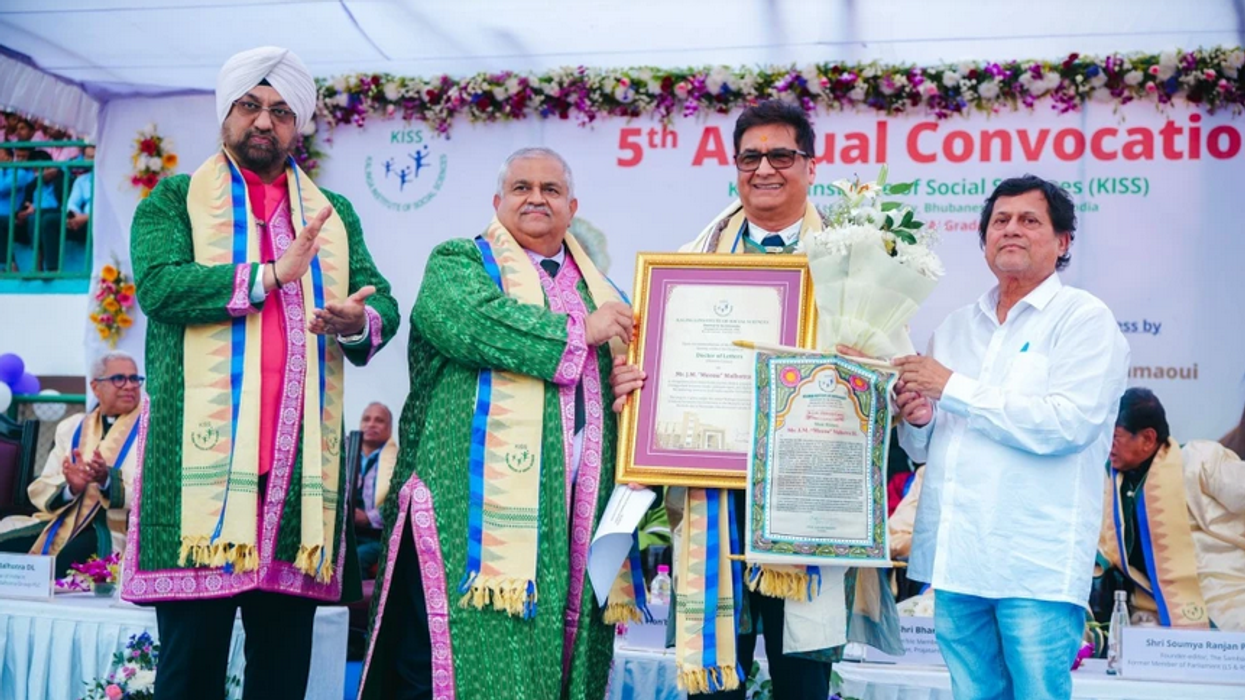With stores in India and New York, multiple clothing brands and a global celebrity following, fashion designer Anita Dongre is a feminist powerhouse in a male-dominated industry. But her true ambition is to create an environmentally sustainable company, she says.
"Sometimes I wish I could just give up design and focus on sustainability full-time," says the Mumbai-based Dongre during an interview at her factory outside India's financial capital.
"Time is running out. Climate change is right at our doorstep and we all have to do something," says the 56-year-old, whose clothes have been worn by some of the world's most high-profile women including Hillary Clinton, Kate Middleton, Ivanka Trump, Priyanka Chopra Jonas, and Beyonce.
Turning a company with an annual turnover of $105 million into a carbon-neutral enterprise is a daunting proposition, but Dongre has never been one to shy away from challenges.
When she started her business aged 23, armed with two sewing machines and a staff of two male tailors perched on the balcony of the bedroom she shared with her sisters, she was the first woman in her conservative family to work.
Today, she says that of all her accomplishments, she is proudest of her commitment that no woman seeking work will ever be turned away from the gates of the four-storey factory she runs.
"I see my journey reflected in theirs," she says, emphasising her belief that "economic empowerment is the only way a woman can assert herself".
Besides producing five clothing lines, hand-crafted fine jewelry and accessories, her foundation provides training and jobs to more than 250 rural women, with plans to cover 30 villages by 2025.
- Greenwashing risks -
Feminist values have been at the heart of her brand: her clothing has always been size-inclusive, going up to an XXL.
Even when she ventured into bridal wear, her advertising campaigns challenged traditional norms and featured women sporting tattoos, enjoying their wine, and paying for their weddings.
"It is very important for me to show a woman who is not coy or veiled -- someone bold and sassy. I was that girl. I drove a jeep. I proposed to my husband," she says.
"The world has never been fair to women... and I am not comfortable promoting regressive ideas to sell clothes," she adds.
Her decision to focus on the urban professional woman has seen the brand reap dividends as female spending power increases in India.
"It's so rewarding to walk into stores and meet the women who buy my clothes. When a customer tells me, 'I wore your blazer to my first job interview 15 years ago and I got the job', it's thrilling," she says.
She will need to rely on that goodwill to convince customers to shop in a wholly different way than they are used to: prioritising sustainability and slow fashion over instant gratification.
On the one hand, Dongre's task has never been easier -- when she spoke about environmentally-friendly design more than a decade ago, few paid attention. Today, she says drolly, "I am glad it's finally fashionable to be green".
On the other hand, greenwashing remains a huge risk, she explains.
"You can't take a sustainable fabric, cover it with plastic sequins and still call it sustainable."
- 'Do more and more' -
She is the only Indian designer to join the Sustainable Apparel Coalition (SAC), a global alliance of retailers, brands, suppliers, campaigners and labour groups that provides members with the tools to measure the environmental impact of their activities.
The SAC is a non-binding organisation, meaning members are largely responsible for their own efforts towards sustainability and transparency.
For her part, Dongre says she feels a drive "to do more and more" on the environmental front.
At her factory, cafeteria food waste is composted or used to make biogas while the water utilised in clothing production is recycled and pumped back into the bathrooms.
Her lower-priced brands AND and globaldesi use fabrics such as sustainably-produced tencel -- a biodegradable fibre made of wood pulp -- while the slow fashion luxury label Grassroot showcases hand-woven, hand-embroidered designs created by Indian artisans.
Yet this commitment to sustainability and to preserving dying crafts comes with risks attached, as Dongre realises.
"The biggest challenge is educating the consumer to support our efforts," she says.
Moreover, it is hard to imagine how a huge company that employs 2,700 people and works with thousands of artisans can be environmentally responsible without compromising on profits.
It is a price she is willing to pay.
"Companies cannot be driven only by profits... this idea of making money in whatever way possible and then giving large sums to charity, it's not sustainable. Why not make contribution to your community a focus of your business to begin with?"
"It's high time companies measured their success in terms of sustainability, not just profit and loss," she says.












